How many of you know about “Holodomor” or have even heard about it in world history classes in school? Probably not many. For too long, it was an event denied, much like the Holocaust. It’s a piece of world history that, like so many cases of genocide and horror, had been pushed under the rug until someone dared to shine a light and tell the story; in this case, director George Mendeluk and screenwriter Richard Bachynsky Hoover with the historical drama, BITTER HARVEST. Both men are not only of Ukrainian heritage, but have a direct tie to Holodomor. Bachynsky Hoover’s family fled the Ukraine in the 1940’s. Mendeluk’s mother was a survivor of Holodomor.
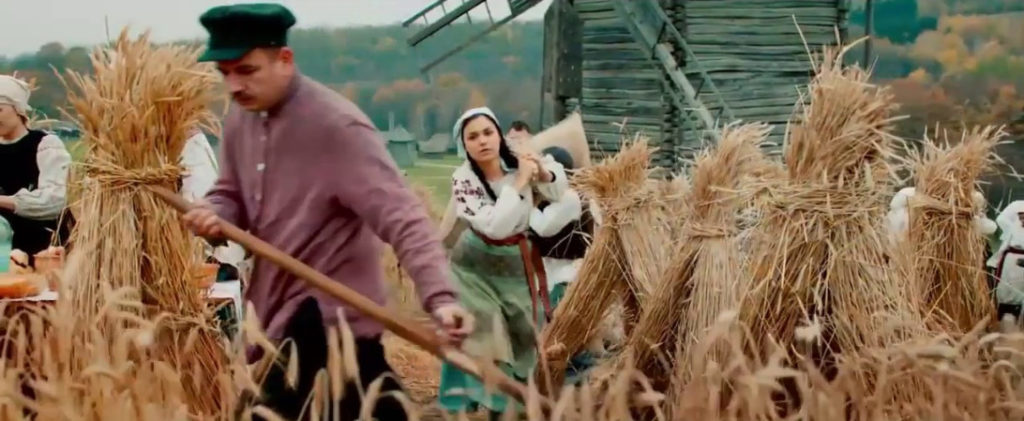
Holodomor (meaning “death by hunger” in Ukrainian) was the forced famine of the Ukraine people as ordered by Joseph Stalin between 1932 and 1933. Between 2.5 and 7.5 million people died from not only starvation, but from ensuing violence of Stalin’s regime in enforcing his orders. Pits were dug into which the dead bodies were cast away like garbage. Some people escaped and have either lived to see this story told or have passed the experiences on to their children and grandchildren so they may tell the story. I first learned of Holodomor in junior high school from a classmate whose grandparents and parents (children at the time) fled the Ukraine and escaped Stalin’s rule, eventually making their way to the United States to build a future of freedom. To see this piece of history now unfold on the big screen is even more shocking than when I first learned of it decades ago. BITTER HARVEST is both haunting and engrossing. An emotional powerhouse of a film, it is an emotionally resonant, riveting telling of history. Fear and terror is palpable. Pain is resonant.

Approaching the story by way of an idealistic young artist named Yuri and the love of his life, his childhood sweetheart Natalka, serves as connective tissue and a romanticized way into history for an audience.
Growing up in the Ukraine countryside, their youth has been idyllic. Community is strong as is the lore of the people. Religion is the foundation of their happiness and beliefs. Yuri especially has an added element to his life thanks to his grandfather Ivan, a highly decorated former military man. Yuri and Ivan are at odds over the world with Ivan already knowing how the country and power-hungry men work and the cost of the Ukraine’s hard-fought freedom after WWI. Ivan always reminds Yuri that the church bell will toll to warn the farmers the Bolsheviks are coming. But Yuri doesn’t heed his grandfather’s wisdom and experience and instead believes the pie-in-sky ideals of his friends and a “utopian” vision by Stalin. Will they ever have a meeting of the minds?
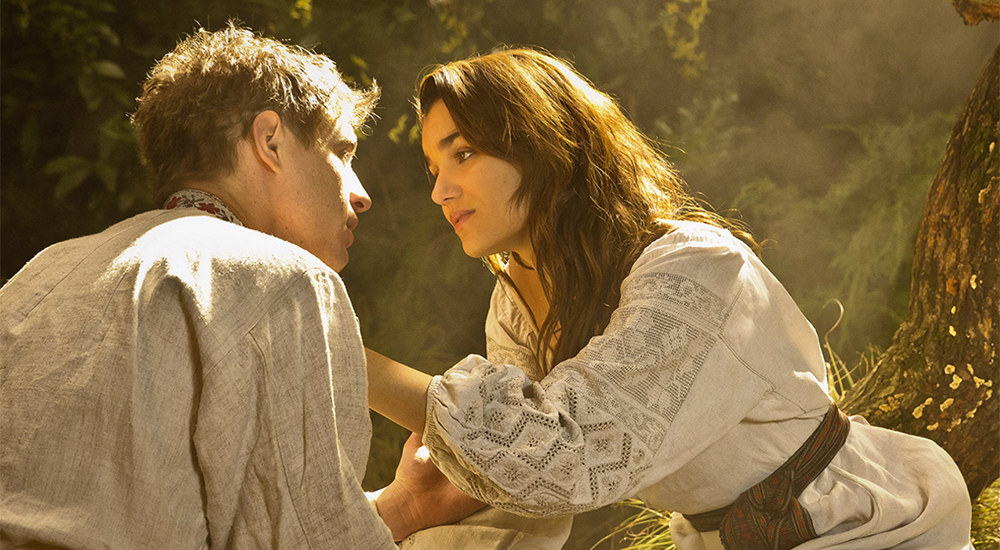
But times are changing with Joseph Stalin in power. (Argued by scholars that the famine was planned by Stalin as a means to quash a Ukrainian independence movement). Stalin begins taking over farms, seizing the harvests, forcing government collectivization, and then using propaganda to paint a picture of the Ukrainians as being rebels and dissidents. Yet, Stalin and his minions, notably his local commissar Sergei, argues his methods are necessary for equality with food and wealth for all. Yuri and his friends are blinded by the unfolding events and believe they can make a difference.
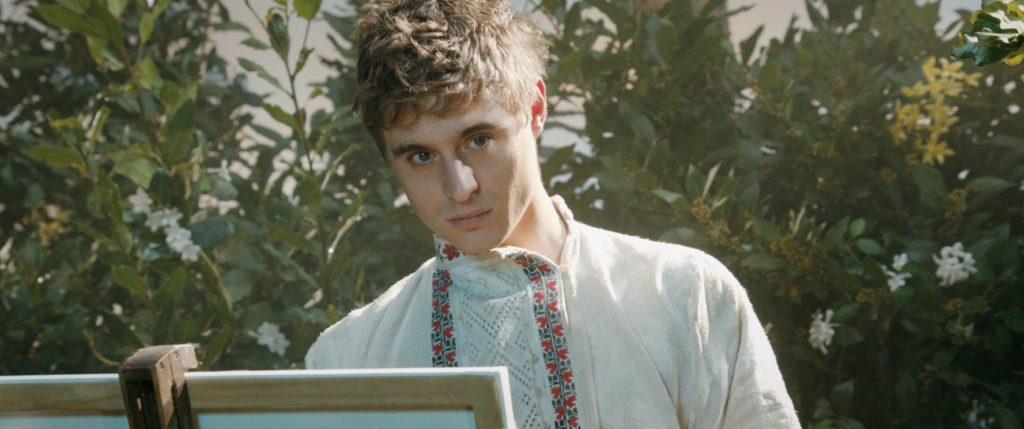
Urged by Natalka to go to Kiev to study art, Yuri leaves the farm. And while he does make his way to art school, he begins to see that the idealistic dreams and speeches his friends had been touting about the greatness of Stalin’s vision, are not true. There is starvation even in Kiev and Yuri can only imagine what is happening at home. Forced to leave art school as he doesn’t share the artistic vision and interpretations of the “new” Bolshevik regime, Yuri picks up odd jobs just to put food in his mouth and keep a roof over his head and eventually finds himself in a Russian prison. (To avoid spoilers, I will not divulge the jobs but let you see for yourselves.) In the meantime, back home Natalka has been forced to do unspeakable things in order to survive and get food for the family, and finds herself falling victim to the violence of Sergei. But Natalka is not one to give up so easily, always having hope and faith.

Realizing he needs to make his way back to his family, Yuri eventually does escape prison, after stabbing a Russian officer to death, joining the anti-Bolshevik resistance, and on his way home befriends a young boy named Lubko who has lost his family in all the madness. As the two struggle to avoid Stalin’s military who are peppering the land looking for rebels, Yuri wonders just what he will find if and when he makes it home. Will Natalka be there? His mother? His grandfather? And what will become of them all?

As Yuri, Max Irons is the heart of BITTER HARVEST, serving as the link between the past and the future. First drawing attention in the YA adaptation of “The Host”, Irons has a presence which draws one closer much like a spider enticing a fly, but in a good way. Irons shows both strength and emotional tenderness as Yuri and is beyond believable. To bolster his performance, Irons studied Ukrainian history in addition to taking art classes so as to add to the authenticity of Yuri. Significant to the entire production is that the story is told primarily through Yuri’s eyes and thanks to his travels, the film opens up different experiential viewpoints, all of which Irons brings to life.
Going toe-to-toe with Irons is Samantha Barks. As Natalka, she brings a “wow” factor to her performance. Such vulnerability, such rage and anger, such strength and conviction. There is not a false moment from her throughout Natalka’s tumultuous story.
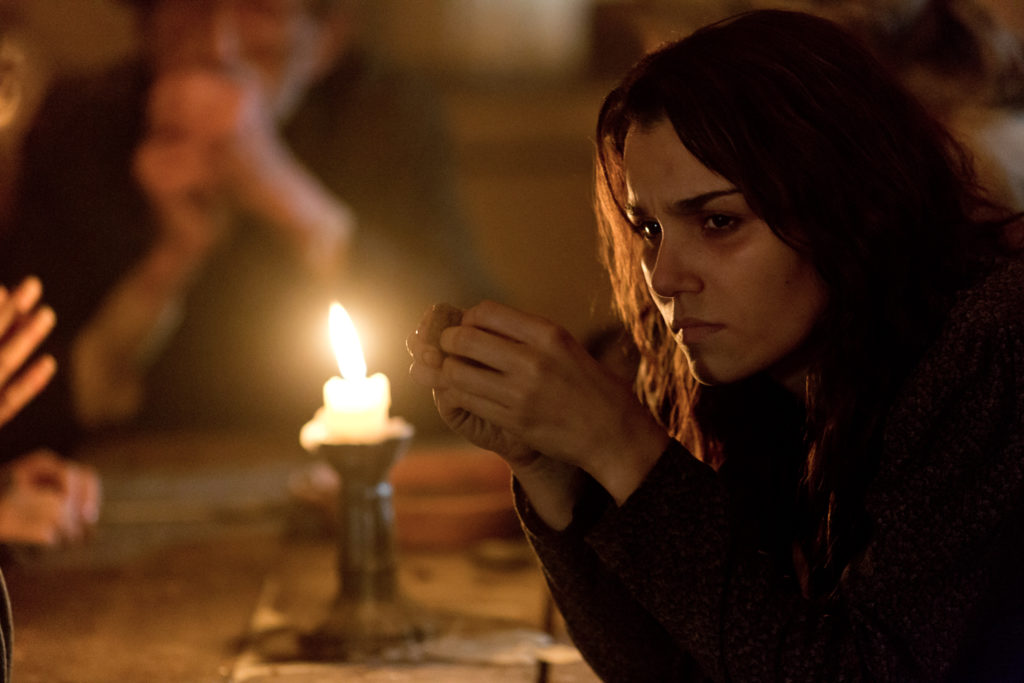
Barry Pepper once again commands the screen with an emotionally chameleonic performance as Yaroslav. And of course, Terence Stamp is flawless as Yuri’s legendary grandfather Ivan, relying on a more tacit and reflective nature to convey Ivan’s life.
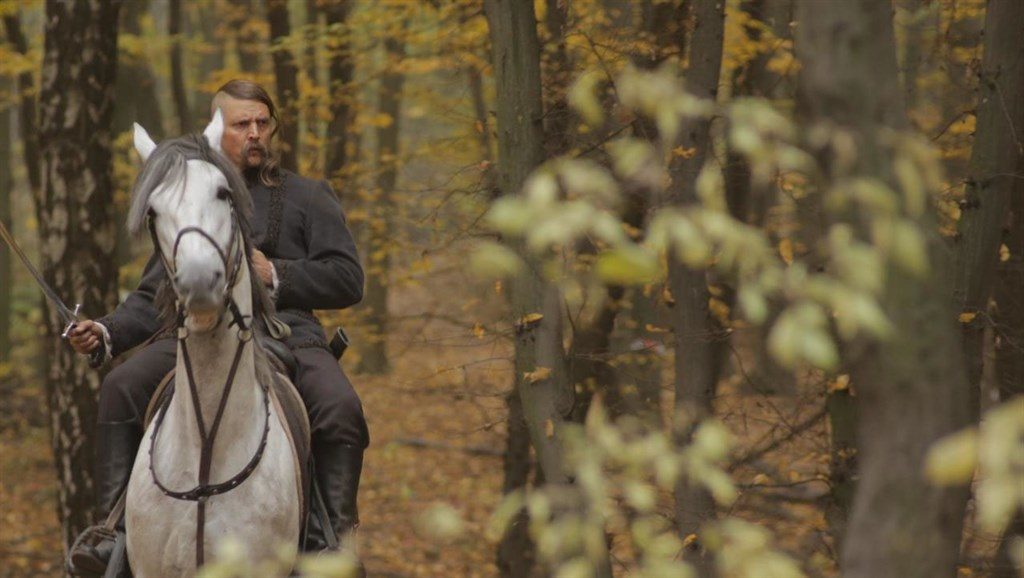
The two mind-blowing performances, however, come from Gary Oliver and Tamer Hassan. Oliver, thanks to hair, make-up and costume is a dead ringer for Joseph Stalin. Adding to the essence of the man are well known mannerisms and poise the world saw with Stalin, with Oliver perfectly embodying all. And then there’s Tamer Hassan. As commissar Sergei, Hassan is evil personified. I would dare say that Hassan has created a character fueled by such pure evil as to rival any villain ever seen on screen. From the physical violence to verbal vitriol to commanding horsemanship, it is impossible to look away from Hassan.
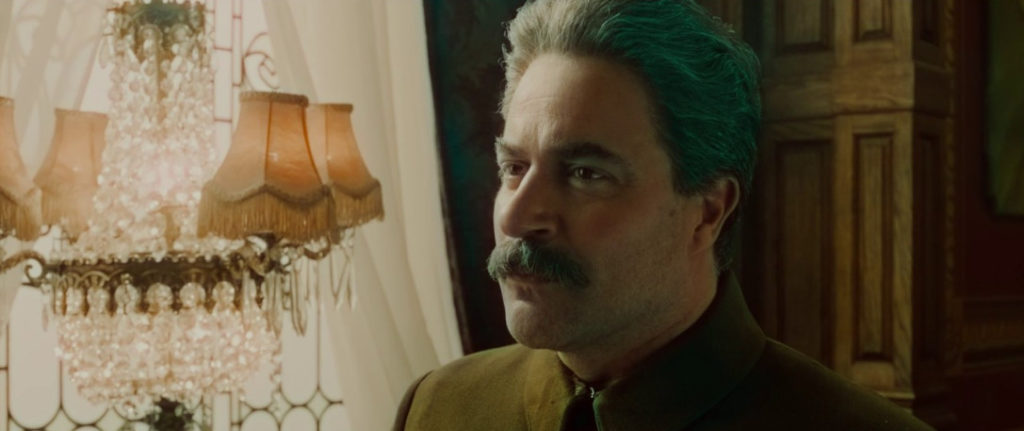
More than satisfying a touchstone of hope for the future is an engaging performance by Jack Hollington as Lubko.
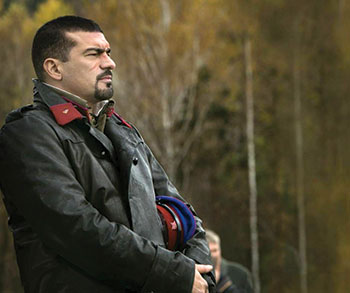
Screenwriter Richard Bachynsky Hoover doesn’t sugarcoat the facts of history with the story itself and thankfully, neither does George Mendeluk with the visualization of the story. The key, however, in making this historical event so resonant and palpable to the audience today is that the history is told through engaging characters like Yuri and Natalka with performances that connect.
This is an interesting choice for director Mendeluk. Coming out of decades of television direction, this is a helluva story to jump into for the big screen, but he does a wonderful job not only with visualizing the story construct, but through cinematography and editing. Reteaming with cinematographer Doug Milsome with whom he did “Lonesome Dove” mini-series and a few other tv gigs, the visual palette and construct is not only authentic but tells its own story thanks to cinematic tonal shifts. (Note – Milsome cut his chops with Stanley Kubrick on films like “The Shining”, “Full Metal Jacket” and “A Clockwork Orange”.) Lensing is beautifully designed and executed from opening shots of golden-hued wheat fields and blue skies to dark muted sickly tones of prisons and death in Kiev. Although shooting wide-screen, there is an intimacy to the visuals that mirrors the relationship of Yuri and Natalka. Shooting on location in many of the same spots where the Holodomor occurred casts a haunting pallor that is unsettling but effective. Mendeluk never allows the audience to get comfortable or feel at ease with the horror that is happening on screen.

Thanks to the Museum of Folk Architecture and Life of Ukraine, Mendeluk and his team were able to recreate cottages that were 150 years old, costumes that were authentic down to the last bit of colorful embroidery or military button. For the opening wheat reaping scene, there is no CGI. Actors were hired to actually reap a wheat field, all of which was filmed and is seen on screen. Shooting in multiple historical locations, adds even more depth to BITTER HARVEST. One of the most historically significant sites is the dungeon in which Yuri is imprisoned. This is an actual dungeon used during Holodomor. Located underground, Ukrainians were imprisoned and then executed here. As comes as no surprise, many of the vehicles utilized in the film also date back to the 1930’s and in many cases, actually used to transport dead bodies to death pits. All of this is brought to life by Mendeluk and Milsome.

Notable is that but for the main actors and crew department heads , most of the cast and crew are Ukranian locals, many of whom have family who lived through Holodomor.
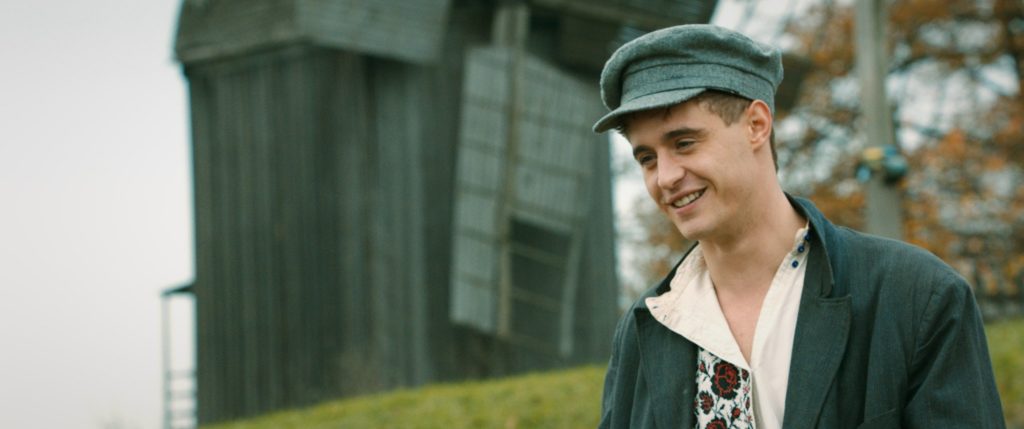
Editing is top-notch thanks to Stuart Baird and co-editor Lenka Svab. Thanks to Baird’s work with 007 and films like “Lethal Weapon” and “Die Hard 2″ he has a great feel for action and pacing and doesn’t disappoint here. But be warned. The violence is brutal. There is unbridled ruthlessness to the Bolshevik actions. Nothing is sugar-coated nor “cut” from view. And dead and mutilated bodies abound. There is, however, a lovely ebb and flow that follows through the film. Beautiful book-ending to the story of Yuri and Natalka comes thanks to two young children happy and carefree in pristine local waters, then metaphorically floating through life together, only to return to the water for a dreamlike ending of possibility with hope for the future, something which is left for the audience to decide.
Slightly disconcerting is the fact that all of the lead actors have British accents while the remaining cast bodes Russian or Eastern European. Although it does sonically standout, it doesn’t detract from the film on the whole.
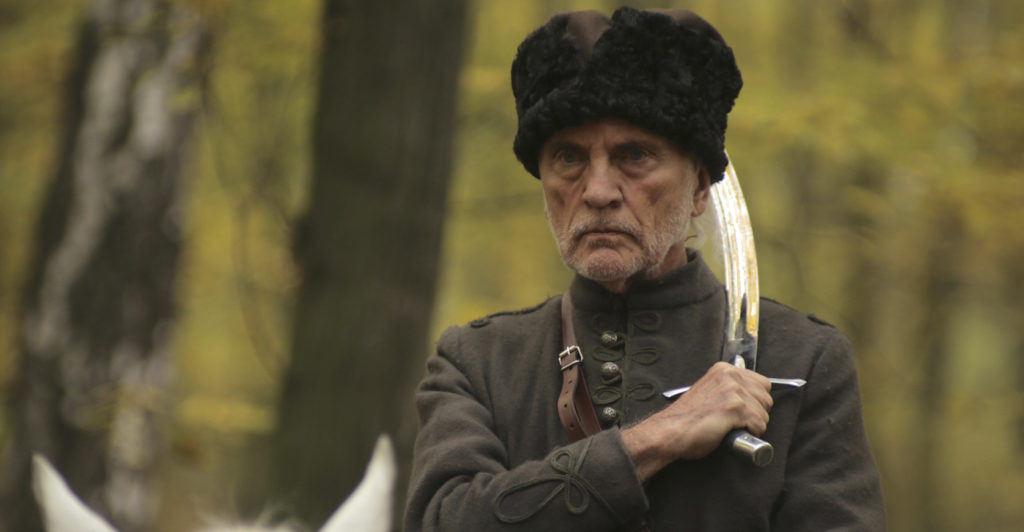
There is no doubt that BITTER HARVEST was made with passion; passion to tell the story of the Holodomor, passion to give a voice to the voiceless. That passion shines brightly throughout the film. And stay through the credits. Photographs of the Holodomor and accompanying statistics give the factual chilling details of the real BITTER HARVEST.
Directed by George Mendeluk
Written by Richard Bachynsky Hoover and George Mendeluk
Cast: Max Irons, Samantha Barks, Terence Stamp, Barry Pepper, Tamer Hassan, Gary Oliver, Jack Hollington












